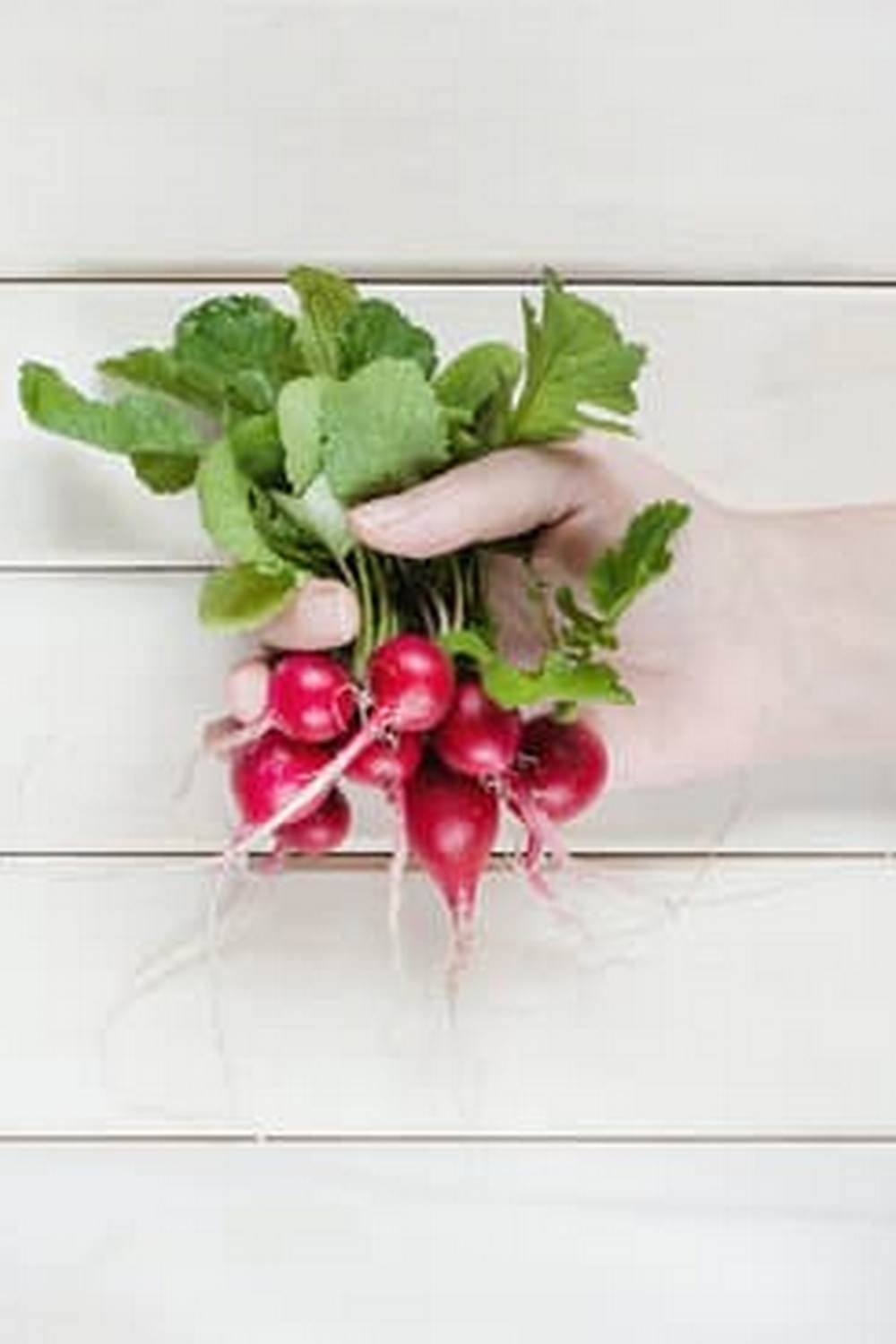Are you tired of dealing with pesky insects and pests in your vegetable garden? Look no further. In this article, we will explore the world of pest control plants for vegetable gardens.
These natural and effective solutions can help protect your garden from unwanted visitors and ensure a bountiful harvest of delicious, healthy produce. From understanding common garden pests to incorporating pest control plants into your garden design, we’ve got you covered. Keep reading to discover the top 10 pest control plants for vegetable gardens and learn how to create a sustainable and thriving garden with these beneficial additions.
When it comes to maintaining a successful vegetable garden, dealing with common garden pests is often a major concern for many gardeners. Insects such as aphids, caterpillars, and beetles can cause significant damage to the vegetables we work so hard to grow. However, by incorporating pest control plants into our gardens, we can naturally deter these pests without the use of harmful chemicals.
Using pest control plants in your vegetable garden not only helps protect your crops but also has numerous other benefits. These plants can attract beneficial insects that prey on pests, improve soil health, and even enhance the overall beauty of your garden.
With our guide on how to incorporate these plants into your gardening design and maximize their benefits through companion planting, you’ll be well-equipped to create a healthy and thriving environment for your vegetables. So let’s dive in and explore the wonderful world of pest control plants for vegetable gardens.
Understanding Common Garden Pests and Their Damaging Effects
When it comes to maintaining a thriving vegetable garden, understanding the common pests that can wreak havoc on your plants is crucial. Some of the most common garden pests include aphids, caterpillars, beetles, and mites. These pests can cause significant damage to your vegetable plants by feeding on leaves, flowers, fruits, and even the roots. As a result, your plants may become stunted or die, leading to poor harvests.
In addition to physical damage, garden pests can also spread diseases among your vegetable plants. For example, aphids are known for transmitting viruses that can cause discoloration and deformities in plant tissues. Caterpillars, on the other hand, can bore into fruits and vegetables, making them unmarketable.
To effectively protect your vegetable garden from these damaging effects, integrating pest control plants is a sustainable and eco-friendly solution. These plants are known for their ability to repel or deter pests naturally. By incorporating them into your garden design, you can create a balanced ecosystem that minimizes pest infestations without relying on harmful chemical pesticides.
To help you get started with using pest control plants for vegetable gardens, here are some of the top options to consider:
- Marigolds: Known for their strong fragrance that repels nematodes and other harmful insects
- Nasturtiums: Attract beneficial insects such as ladybugs and repel aphids
- Chives: Repel carrot rust flies and deter Japanese beetles from feeding on nearby plants
By understanding the damaging effects of common garden pests and embracing natural solutions like pest control plants for vegetable gardens, you can create a healthy and sustainable environment for your crops while minimizing the use of synthetic pesticides.
The Benefits of Using Pest Control Plants in Vegetable Gardens
Enhancing Natural Pest Management
One of the main benefits of using pest control plants in vegetable gardens is that they contribute to natural pest management. Certain plants, such as marigolds, lavender, and basil, emit natural compounds that repel pests like aphids, beetles, and mosquitoes. This can help reduce the need for chemical pesticides, creating a healthier and more sustainable gardening environment.
Improving Soil Health
In addition to repelling pests, many pest control plants can also improve soil health. Plants like dill, coriander, and fennel attract beneficial insects such as ladybugs and lacewings which are natural predators of harmful garden pests. By increasing the presence of these beneficial insects in your garden, you can create a more balanced ecosystem that naturally controls pest populations.
Enhancing Biodiversity
Another significant benefit of using pest control plants is their ability to enhance biodiversity in vegetable gardens. When you incorporate a variety of pest-repelling plants into your garden design, you create a diverse habitat that attracts a wide range of beneficial insects and wildlife. This not only helps keep pest populations in check but also contributes to the overall health and resilience of your garden ecosystem.
By harnessing the benefits of pest control plants for vegetable gardens, gardeners can promote a more sustainable and thriving growing environment while reducing the reliance on chemical pesticides. Incorporating these plants into your garden design not only helps manage common garden pests effectively but also contributes to the overall health and productivity of your vegetable garden.
Top 10 Pest Control Plants for Vegetable Gardens
When it comes to maintaining a healthy and thriving vegetable garden, one of the key strategies is to incorporate pest control plants into your garden design. Pest control plants are known for their ability to repel or deter common garden pests, reducing the need for chemical pesticides and promoting a more sustainable gardening approach.
Here are the top 10 pest control plants that are highly effective in keeping common garden pests at bay:
- Marigolds: These colorful flowers emit a strong fragrance that repels aphids, mosquitoes, and other pests.
- Basil: This aromatic herb not only enhances the flavor of your dishes but also repels mosquitoes, flies, and spider mites.
- Lavender: Known for its soothing scent, lavender plants can deter fleas, moths, and even mice.
Incorporating these pest control plants into your vegetable garden not only adds beauty and diversity to your garden but also serves as a natural barrier against common pests. By strategically placing these plants throughout your garden, you can create a more balanced ecosystem that promotes healthy plant growth while minimizing pest damage.
In addition to the top 10 pest control plants listed above, there are many other options available that can help protect your vegetable garden from harmful pests. Whether you choose to plant them alongside your vegetables or in separate areas of your garden, these pest control plants play a vital role in creating a sustainable and thriving vegetable garden.
How to Incorporate Pest Control Plants Into Your Garden Design
When it comes to incorporating pest control plants into your garden design, there are a few key considerations to keep in mind. First and foremost, it’s important to choose the right plants for your specific region and climate. Different pest control plants thrive in different environments, so be sure to do your research and select varieties that will flourish in your garden.
One popular method of incorporating pest control plants is by creating a dedicated “companion planting” arrangement. This involves grouping together certain plant species that have been shown to benefit each other when grown in close proximity. For example, planting basil alongside tomatoes has been known to help deter pests such as aphids and hornworms, ultimately protecting the health of both plants.
In addition to companion planting, consider incorporating pest control plants into the edges of your garden beds or as borders along walkways. Not only can this add visual interest to your garden design, but it can also serve as a natural barrier against common garden pests. For example, marigolds are known for their ability to repel nematodes, making them an excellent choice for planting around the perimeter of your vegetable garden.
By strategically incorporating pest control plants into your garden design, you can create a more resilient and self-sustaining ecosystem that naturally wards off harmful insects and promotes the overall health of your vegetable garden. With some careful planning and thoughtful consideration, you can enjoy the benefits of these natural pest deterrents while enhancing the beauty and productivity of your garden.
Companion Planting
Companion planting is a gardening technique that involves planting different species of plants together to benefit each other. When it comes to pest control plants for vegetable gardens, companion planting can be an effective way to maximize the benefits of these plants. By strategically placing pest control plants alongside your vegetables, you can create a natural defense system against common garden pests.
One of the key benefits of companion planting with pest control plants is the ability to attract beneficial insects that prey on garden pests. For example, planting marigolds near your tomato plants can attract ladybugs, which are known to feed on aphids and other harmful insects. Additionally, certain herbs like basil and mint can help repel pests such as mosquitoes and flies, making them great companions for your vegetable garden.
In addition to attracting beneficial insects and repelling pests, companion planting with pest control plants can also improve soil health and biodiversity in your garden. Certain pest control plants have deep root systems that can help break up compacted soil and improve drainage, while others can add essential nutrients to the soil through a process called dynamic accumulation. By incorporating these plants into your garden design, you can create a more balanced and sustainable ecosystem for your vegetable crops.
| Companion Plant | Pest Repelled/Attracted |
|---|---|
| Marigolds | Attracts ladybugs, repels nematodes |
| Basil | Repels mosquitoes and flies |
| Mint | Repels ants and fleas |
Tips for Maintaining a Healthy and Pest-Free Vegetable Garden With Pest Control Plants
Maintaining a healthy and pest-free vegetable garden can be a challenging task, but incorporating pest control plants into your garden design can be an effective and natural way to keep pests at bay. These plants not only add beauty to your garden but also help in repelling harmful insects, attracting beneficial ones, and even improving the health of your vegetables.
Here are some tips for maintaining a healthy and pest-free vegetable garden with the use of pest control plants.
Firstly, it’s important to choose the right pest control plants for your specific garden needs. Different plants have different properties that make them effective in repelling specific pests. For example, marigolds are known to repel nematodes, while nasturtiums can deter aphids and squash bugs. Researching the types of common pests in your area and choosing plants that are known to deter them is essential for successful pest control in your vegetable garden.
In addition, proper placement of these pest control plants is crucial for their effectiveness. Planting them strategically throughout your garden can create a natural barrier against invading pests and reduce the chance of infestations. For example, planting basil near tomatoes can help reduce hornworm infestations, while planting dill near cucumbers can deter cucumber beetles.
Lastly, regular maintenance of your pest control plants is necessary to ensure that they continue to effectively repel pests. Pruning, watering, and providing proper care for these plants will help them thrive and serve their purpose in keeping your vegetable garden healthy and free from damaging insects.
| Tips for Maintaining a Healthy & Pest-Free Vegetable Garden | Pest Control Plants |
|---|---|
| Choose the right pest control plants based on common pests in your area | Marigolds (repel nematodes), Nasturtiums (deter aphids and squash bugs) |
| Strategically place pest control plants throughout the garden | Basil near tomatoes (reduce hornworm infestations), Dill near cucumbers (deter cucumber beetles) |
| Maintain regular care for pest control plants | Pruning, watering, and proper care to ensure continued effectiveness |
Common Mistakes to Avoid When Using Pest Control Plants in Vegetable Gardens
When using pest control plants in vegetable gardens, it is crucial to be mindful of common mistakes that can hinder their effectiveness. By avoiding these pitfalls, gardeners can maximize the benefits of pest control plants and create a healthy, thriving garden.
Choosing the Wrong Plants
One common mistake is choosing the wrong pest control plants for a specific garden. Not all pest-repelling plants are suitable for every type of vegetable or garden environment. It is essential to research which plants are most effective against the specific pests that pose a threat to your vegetables. For example, marigolds are effective at repelling nematodes in the soil, while planting basil can deter mosquitoes and flies from infesting your garden.
Improper Placement
Another mistake to avoid is improper placement of pest control plants within the vegetable garden. Placing these plants too far away from susceptible crops may reduce their effectiveness in deterring pests. It is important to strategically integrate pest control plants throughout the garden to create a barrier or buffer zone against harmful insects. Additionally, consider planting them near the most vulnerable vegetables to provide maximum protection.
Overlooking Maintenance
One overlooked mistake when using pest control plants in vegetable gardens is neglecting their maintenance. Just like any other plant, pest control plants require proper care and attention to thrive and effectively repel pests. Failure to maintain these plants can result in decreased efficacy against garden pests. Regular watering, pruning, and fertilizing are essential for ensuring that pest control plants remain healthy and robust enough to fulfill their role in protecting the vegetable garden.
By being mindful of these common mistakes, gardeners can ensure that they are maximizing the benefits of using pest control plants in their vegetable gardens. This approach will lead to a healthier, more sustainable garden with fewer instances of pest infestations impacting crop yields.
Conclusion
In conclusion, incorporating pest control plants into your vegetable garden can significantly contribute to its sustainability and success. By understanding common garden pests and their damaging effects, as well as the benefits of using pest control plants, gardeners can make informed choices about which plants to include in their gardens. The top 10 pest control plants mentioned in this article offer a wide variety of options for attracting beneficial insects and repelling harmful ones.
Furthermore, knowing how to incorporate these pest control plants into your garden design and utilizing companion planting techniques can maximize their effectiveness. By following the tips for maintaining a healthy and pest-free vegetable garden with pest control plants, gardeners can ensure that their crops thrive while naturally managing pests. It is important to avoid common mistakes when using pest control plants in vegetable gardens, such as relying solely on these plants without considering other integrated pest management strategies.
Ultimately, by implementing the knowledge gained from this article, gardeners can create a sustainable and thriving vegetable garden with the help of pest control plants. With careful planning, proper maintenance, and an understanding of the role these plants play in supporting a balanced ecosystem, it is possible to enjoy bountiful harvests while minimizing the need for chemical pesticides. Embracing the use of pest control plants not only benefits the health of the garden but also contributes to environmental conservation efforts.

If you’re looking to get into vegetable gardening, or are just looking for some tips on how to make your current garden better, then you’ve come to the right place! My name is Ethel and I have been gardening for years. In this blog, I’m going to share with you some of my best tips on how to create a successful vegetable garden.





